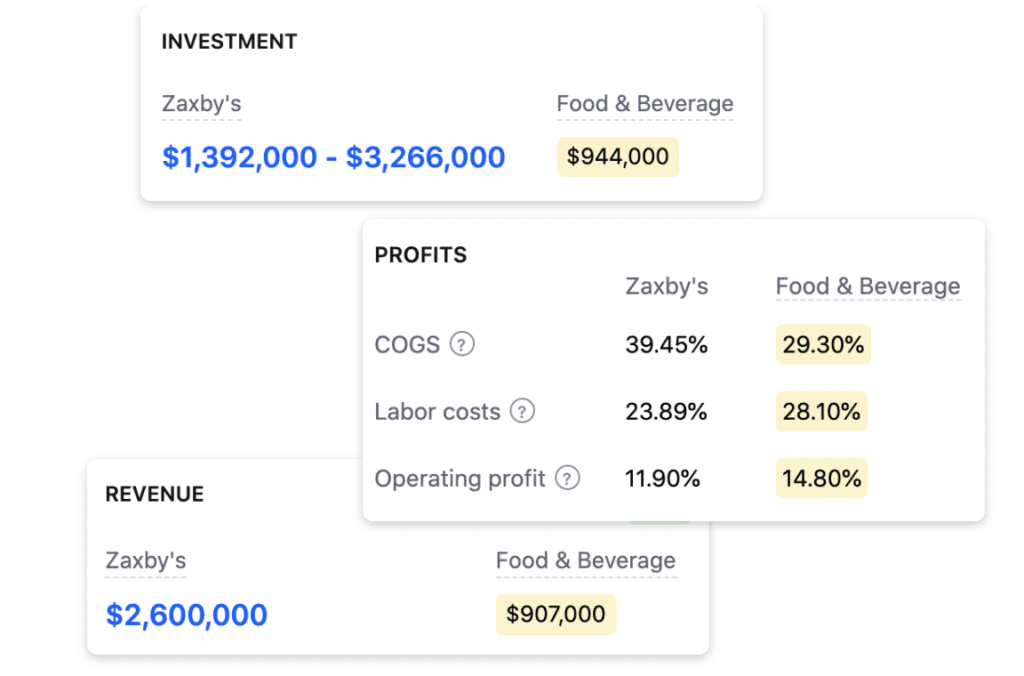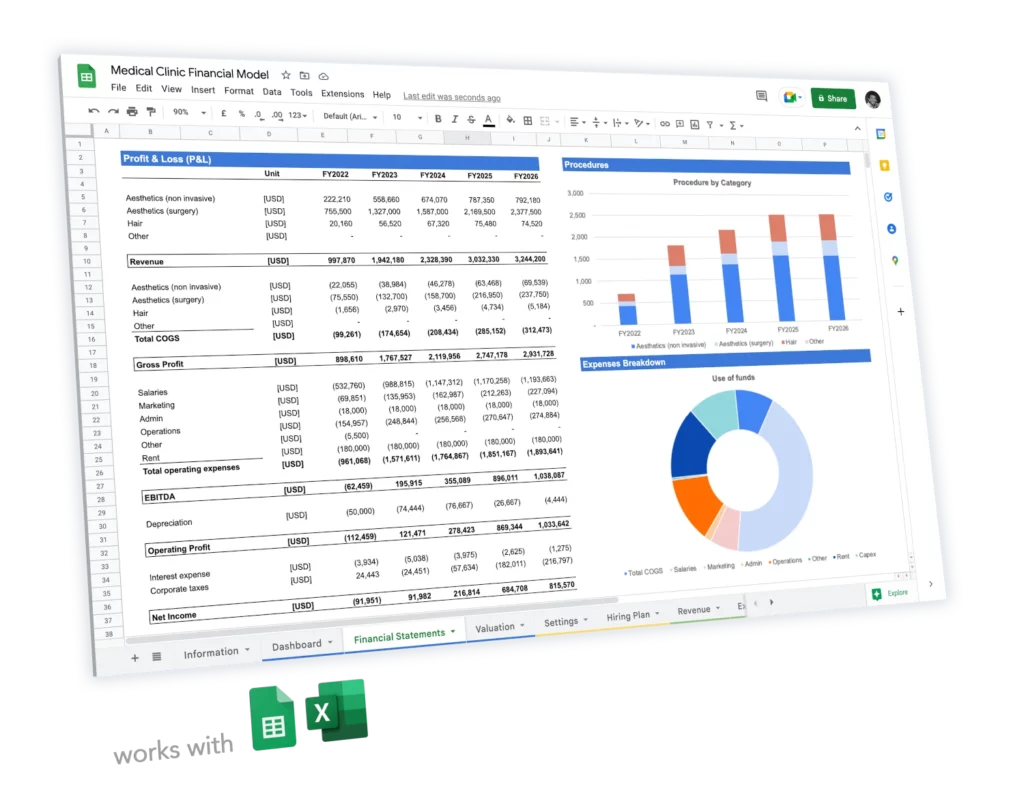
Craters & Freighters Franchise Costs $173K – $288K (+ 2024 Profits)
Here’s what you need to know if you’re interested in opening a Craters & Freighters franchise.

|
KEY FRANCHISEE INFORMATION
Here are the most important stats to know for franchisees.

NUMBER OF LOCATIONS

INITIAL INVESTMENT
$173,000 – $288,000

ROYALTY FEE

REVENUE PER YEAR
$1,601,000
Craters & Freighters is a distinguished leader in the specialized field of custom crating and shipping services. Established in 1990, this company caters to a broad range of clientele, including industries such as telecommunications, electronics, medical equipment, aerospace, biotechnology, and heavy machinery.
Their services are designed to meet the diverse needs of both residential and business sectors, ensuring each client receives tailored packaging and crating solutions.
Headquartered in Golden, Colorado, Craters & Freighters has extended its footprint globally, boasting multiple locations across the United States. Their services include everything from domestic to international shipping, air and ocean freight, and even white-glove delivery, emphasizing their capacity to handle a variety of shipping requirements with precision.

Number of locations
Here’s how many Craters & Freighters there are in the US today.
| TOTAL UNITS 64 |
| FRANCHISED UNITS 64 |
Find the most profitable franchises on

Compare 1,000+ franchises and download unlimited FDDs
 | Craters & Freighters |
| FRANCHISE FEE | $30,000 – $40,000 |
| ROYALTY FEE | 5.00% |
| INITIAL INVESTMENT | $173,000 – $288,000 |
| AVERAGE REVENUE | $1,601,000 |


Initial investment
Here’s what you can expect to spend to start a Craters & Freighters franchise.
Note: The table above provides a snapshot of the main costs associated with starting the most common franchise format (as disclosed in the Item 7 of the Franchise Disclosure Document). For a complete overview of all the expenses involved with the various formats offered by the franchisor, please consult the Franchise Disclosure Document.

Franchise fees & Royalties
Here are the main ongoing fees the franchisor will ask you to pay going forward to run the franchise.
Initial Franchise Fee
The Initial Franchise Fee is payable upon execution of the agreement and ranges from $30,000 to $40,000 depending on the specifics of the agreement.
Royalty Fee
Franchisees must pay a monthly Royalty Fee equal to the greater of 5% of Adjusted Gross Sales or a minimum monthly amount, determined by performance standards.
Marketing/Advertising Fee
Franchisees are required to spend the greater of $4,800 or 1% of Adjusted Gross Sales annually on marketing and advertising, not exceeding $18,000 per year.
Technology Fee
The monthly Technology Fee is currently $400, which may be increased upon notice but will not exceed $750 per month.
Lease or Rent Fee
Monthly rent fees can range from $5,000 to $10,000, depending on the lease agreement specifics.
Transfer Fees
A transfer fee of $10,000 is required to defray the expenses associated with the transfer of the franchise agreement unless it is transferred among existing owners.

Revenue & Profits
Here’s how much revenue and profits you can make with a Craters & Freighters franchise.
Find the most profitable franchises on

Compare 1,000+ franchises and download unlimited FDDs
 | Craters & Freighters |
| FRANCHISE FEE | $30,000 – $40,000 |
| ROYALTY FEE | 5.00% |
| INITIAL INVESTMENT | $173,000 – $288,000 |
| AVERAGE REVENUE | $1,601,000 |

Franchise pros and cons
The Pros:
- A wide client base: Craters & Freighters serves a wide range of clientele, increasing the revenue potential.
- Insurance policy: The company’s group cargo insurance policy protects franchise owners and their clients.
- eBusiness management software: Franchisees leverage the company’s proprietary business software to run the day-to-day operations, including creating pricing reports, managing customer relations and other aspects of logistics.
- In-house engineering team: The company offers in-house engineering services to get well-designed crates to package and ship any product.
- Marketing and advertising support: Franchisees get customized marketing assistance from a dedicated corporate department, paying attention to the business location and the owner’s marketing capabilities. Additional marketing support includes eMarketing, opening assistance, sales support and large trade areas.
- Training: Franchisees don’t need a crate building, transportation or packaging background to operate a Craters & Freighters franchise. The franchisor’s dependable staff will guide you through a comprehensive training program covering packaging, crating, shipping and administration.
- Exclusive territory protection: Franchisees don’t compete against other Craters & Freighters franchises thanks to the exclusive territory rights.
The Cons:
- No absentee ownership: Franchise owners must be involved in the day-to-day operations.
- Not a part-time business: A Craters & Freighters franchise requires a full-time commitment.
- Not a home-based opportunity: Franchises must operate from the designated physical locations.
- Minimum employee requirement: Business owners need 3-4 employees to run a new franchise.
How to open a Craters & Freighters franchise
Opening a Craters & Freighters franchise involves several steps, designed to ensure you are a good fit for the franchise. Here are the main steps to follow to open a Craters & Freighters franchise.
1. Research the Franchise
- Understand the Business Model: Begin by familiarizing yourself with Craters & Freighters’ services, target markets, and operational requirements.
- Franchise Benefits: Look into the specific support and resources the franchise offers, such as training, marketing, and ongoing support.
- Financial Requirements: Review the initial investment, ongoing fees, and financial performance of existing franchises.
2. Contact Craters & Freighters for Franchise Information
- Request Detailed Franchise Information: Reach out to the company to get comprehensive details about the franchising opportunities available.
- Initial Inquiry: Express your interest and provide your contact information so that a franchise representative can get in touch with you.
3. Submit an Application
- Application Form: Fill out the franchise application form detailing your business background, financial information, and reasons for interest in the franchise.
- Documentation: Prepare and submit any required legal and financial documents that the franchise may request.
4. Attend Discovery Day
- Visit Headquarters: Attend a discovery day at Craters & Freighters’ headquarters or a designated location, which typically involves meeting key franchise staff, understanding the business operations firsthand, and asking questions.
- Evaluation: Use this opportunity to evaluate whether the franchise is the right fit for your business goals and expectations.
5. Review Franchise Agreement
- Legal Review: Thoroughly review the franchise agreement with the assistance of a lawyer experienced in franchise law.
- Understand Your Obligations: Pay close attention to your obligations under the franchise agreement, including fees, the term of the agreement, territory rights, and renewal options.
6. Secure Financing
- Funding Options: Determine how you will finance the franchise, including personal savings, bank loans, or other financing options.
- Financial Planning: Create a detailed business plan to present to potential lenders, outlining how you plan to manage and grow the franchise.
7. Training and Launch
- Complete Required Training: Participate in all training programs offered by Craters & Freighters, which will cover operations, technology, sales, and customer service.
- Set Up Operations: Set up your franchise according to the company’s guidelines, including securing a location, hiring staff, and setting up equipment.
Disclaimer
Disclaimer: This content has been made for informational and educational purposes only. We do not make any representation or warranties with respect to the accuracy, applicability, fitness, or completeness of the information presented in the article. You should not construe any such information or other material as legal, tax, investment, financial, or other professional advice. Nothing contained in this article constitutes a solicitation, recommendation, endorsement, advertisement, or offer to buy or sell any franchises, securities, or other financial instruments in this or in any other jurisdiction in which such solicitation or offer would be unlawful under the franchise and/or securities laws of such jurisdiction.
All content in this article is information of a general nature and does not address the detailed circumstances of any particular individual or entity. Nothing in the article constitutes professional and/or financial and/or legal advice, nor does any information in the article constitute a comprehensive or complete statement of the matters discussed or the law relating thereto. You alone assume the sole responsibility of evaluating the merits and risks associated with the use of any information or other content in this article before making any decisions based on such information or other content.
Interested in buying a Craters & Freighters franchise?
Download the financial plan built with the latest Franchise Document.



